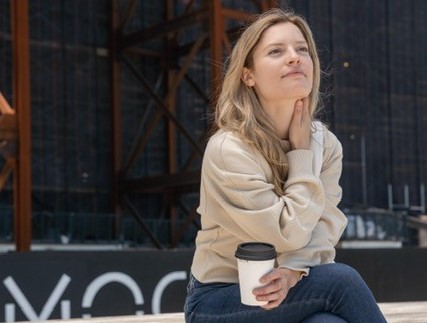Working from home for part or all of the week has increased significantly since the COVID-19 pandemic, but little is known about how these homeworkers break up the day.
Researchers at Manchester Met found that being able to move around less, a lack of outside space or an expectation to be ‘be online’ can affect how people take breaks when at home.
But taking breaks while working from home can help to increase productivity and wellbeing, alongside other benefits such as work-life balance, for those exclusively working from home or in a hybrid role.
These findings can help to inform employees and organisations to support those who are working from home.
Lecturer in Psychology at Manchester Met, Dr Lucy Walker, said: “We found an association between the number of breaks taken outside and an increase in wellbeing. So, if people working from home did take breaks outside, took short walks or had some time in the garden, then they showed increased scores in wellbeing overall.
“When we go outside and connect with nature, we’re completely detaching from a work-based environment and we’re able to replenish our psychological and our physiological resources which get depleted when we’re in a work-based environment. It also helps to get us in more of a balanced mode and work more intensively when we get back. It also helps in resetting our physiology, taking us out of a stressed mode into a relaxed one.”
The study, which surveyed 130 employees at a global organisation, found that the office environment was more conducive to taking breaks, with more areas for breaks and a variety of opportunities to leave the desk. Home participants felt ‘desk-bound’ as all work and meetings, happen in front of a computer screen.
However, workers said that prior to working from home, they may not have taken advantage of taking breaks outside and that they now tried to take short walks or exercise.
Participants also took personal responsibility to make sure they incorporated breaks away from the desk fitting it in around their work but felt more could be done by employers to promote exercise behaviours, mostly via promoting acceptability of flexible working habits such as being able to take longer breaks in the day to attend exercise classes.
There is also evidence that if being near what is called ‘blue space’ so near water, a lake river or the seaside that is even more beneficial. So, the ability to be near green and blue space are both particularly good for stress levels.
Dr Walker adds that it’s also important to take a proper break and not just a functional break, such as doing something else around the home, for example.
The research also found that, because of the nature of online working, people didn’t feel like they were able to take a break as they felt guilty if they were away from their desk because there was a social norm that they were going to be online and available all the time.
Dr Liz Braithwaite, Senior Lecturer in Psychology at Manchester Met, added: “One of the ways in which we can perhaps address the issue of ‘digital presence’ within an organisation is setting those ground rules and social norms, such as managers leading by example and taking breaks.”
The research team is now working with an organisation which installed a garden for staff at one of their office locations, to see whether taking a break in a garden versus taking a break in a room in a different location to their desks has an impact on wellbeing, stress levels and productivity after 10 consecutive days. This will provide a comparison about what kind of impact the green garden space is having.







